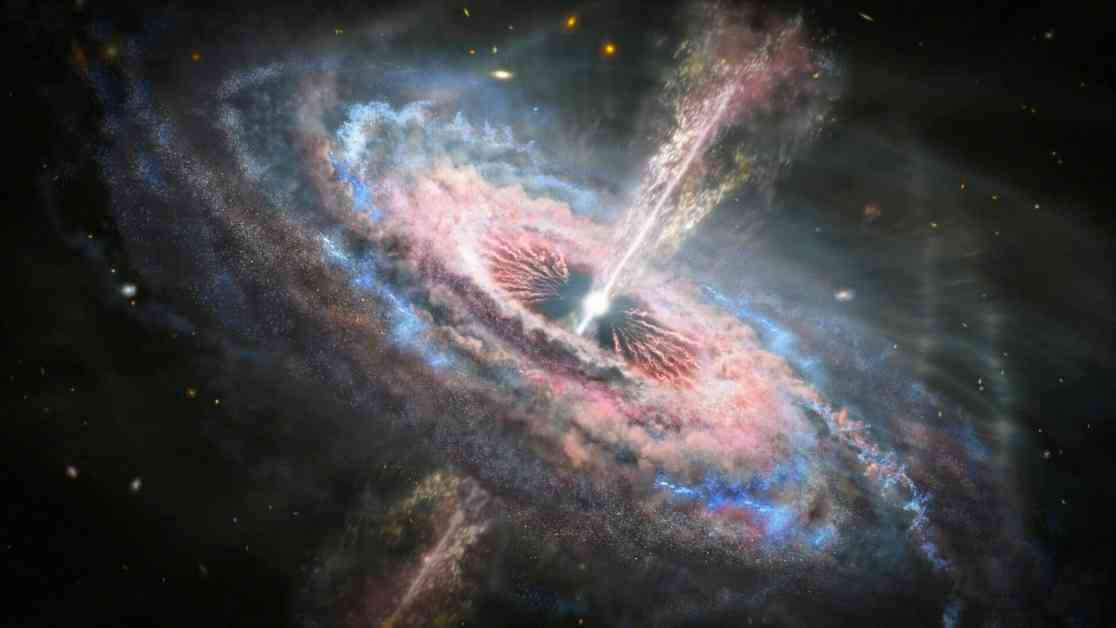Dark matter has long been a cosmic enigma, a mysterious substance that seems to make up the majority of the universe’s mass yet remains elusive and invisible to our traditional methods of detection. While scientists have known that dark matter interacts with regular matter through gravity, a recent study published in The Astrophysical Journal Letters suggests that there may be more to their interaction than meets the eye.
### Dark Matter’s Weighty Presence
Dark matter is believed to be five times more massive than the regular matter that we are familiar with. This significant weight plays a crucial role in holding galaxies together and influencing the peculiar movements of stars within them. Until now, gravity was thought to be the primary force governing the interaction between dark matter and regular matter, but the new study challenges this assumption.
### Unveiling Dark Matter’s Influence
The enigmatic nature of dark matter stems from its resistance to interacting with light, making it nearly impossible to directly observe. However, despite its invisibility, dark matter possesses mass, which allows it to exert gravitational effects on its surroundings. This gravitational pull not only enables dark matter to mingle with regular matter but also provides scientists with a means to indirectly observe its presence through gravitational lensing.
Gravitational lensing occurs when the gravitational field of dark matter around a galaxy bends light passing through it, creating distortions that can be detected and analyzed. This phenomenon has been instrumental in mapping the distribution of dark matter in the universe and has led to significant insights into the role of dark matter in shaping the cosmos.
### A Surprising Revelation
The recent study delved into the interactions between dark matter and regular matter by examining six ultrafaint dwarf galaxies orbiting near our Milky Way. These galaxies, despite their relatively low stellar populations, are believed to be predominantly composed of dark matter. Through computer simulations, the researchers found that the distribution of stars within these galaxies did not align with what would be expected if gravity were the sole force at play between dark matter and regular matter.
This unexpected finding challenges the prevailing understanding of dark matter and raises questions about the existence of additional forces or interactions beyond gravity. The implications of this discovery could revolutionize our comprehension of dark matter and its role in the universe, opening up new avenues for exploration and research.
### The Future of Dark Matter Research
While these initial findings are groundbreaking, there is still much to be uncovered about the true nature of the interaction between dark matter and regular matter. Scientists are now faced with the task of unraveling the complexities of this relationship and determining the underlying mechanisms driving these interactions.
As researchers continue to push the boundaries of our knowledge, the study of dark matter remains a tantalizing frontier in astrophysics. With each new discovery, we inch closer to unlocking the secrets of the universe’s most enigmatic substance and gaining a deeper understanding of the cosmic forces that shape our reality.













